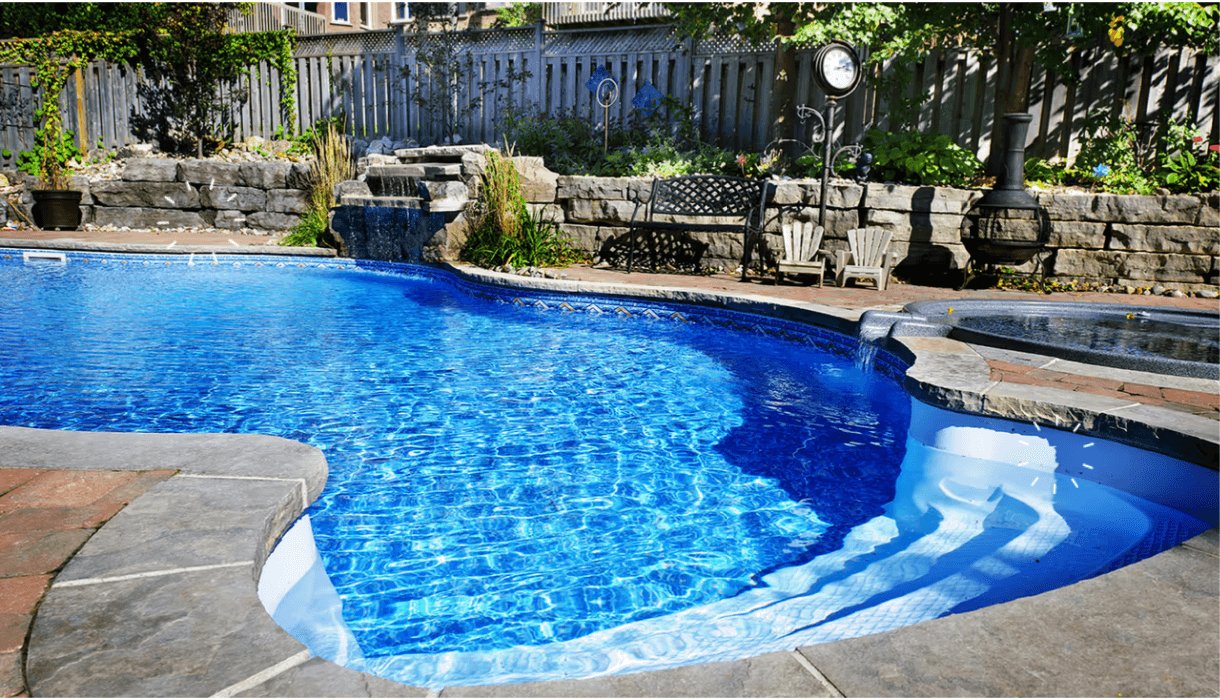When was the last time you looked at your pool cleaning robot and thought, "You know what? You're doing just fine, little buddy"? If you're like most pool owners, that sentiment might be as rare as a snowball in Phoenix.
Despite the remarkable advancements in robotic pool cleaning technology over the past decade, there's still a nagging feeling that these mechanical helpers could be doing more. After all, we're living in an age where our phones recognize our faces and our refrigerators can tell us when we're out of milk—shouldn't our pool cleaners be equally impressive?
According to the Association of Pool & Spa Professionals, there are more than 10.4 million residential swimming pools in the United States, each one requiring regular maintenance to stay safe and inviting. With so many Americans investing significant time and money in pool upkeep, it's worth asking: what features do today's pool cleaning robots desperately need to upgrade?
1. Truly Intelligent Navigation Systems
Most robotic pool cleaners claim to have "smart" navigation, but let's be honest—their idea of intelligence often resembles that of a toddler who's had too much sugar. They bump into walls, get stuck in corners, and sometimes seem determined to clean the same spot repeatedly while ignoring other areas entirely.
The Robotics Business Review highlights that advanced mapping and navigation systems have transformed indoor robot vacuums, but pool robots have lagged behind in adopting similar technologies. The reason? Water presents unique challenges for sensors and mapping systems.
Companies like Xbenbot are leading the charge to change this with their Hydro-Puls Robotic Pool Cleaner, which utilizes more sophisticated algorithms to create efficient cleaning patterns. However, even the most advanced models on the market today could benefit from:
- Comprehensive 3D mapping: Creating detailed models of pool topography, including steps, corners, and water features
- Memory functionality: Remembering trouble spots that consistently accumulate debris
- Adaptive learning: Adjusting cleaning patterns based on when and where debris tends to accumulate in your specific pool
As one pool owner from Texas put it: "I paid more for my pool robot than my first car. The least it could do is figure out where the dang stairs are without me having to fish it out every other day."
2. Energy Efficiency That Doesn't Drain Your Wallet
The U.S. Department of Energy notes that pool maintenance can account for up to 30% of a household's energy costs in warm climates. Traditional pool robots, while more efficient than manual cleaning, still consume significant electricity.
The next generation of pool robots needs:
- Solar charging capabilities: Utilizing the same sunlight that heats your pool to power its cleaner
- Variable power modes: Using only the energy needed for the job at hand
- Energy harvesting from motion: Converting the kinetic energy of movement into additional power
Xbenbot's Hydro-Puls already demonstrates improved efficiency over conventional models, but the potential for truly energy-neutral pool cleaning remains an exciting frontier. Imagine a pool robot that powers itself using small solar panels while floating in storage mode, ready to deploy whenever needed without ever drawing from your home's electricity.
As researchers at the National Renewable Energy Laboratory have demonstrated, even small-scale solar applications can significantly reduce household energy consumption. Applying these principles to pool maintenance represents a massive opportunity for innovation.
3. Full-Spectrum Cleaning Beyond Just Debris
Most current pool robots focus primarily on physical debris—leaves, dirt, bugs, and the occasional lost toy. But according to the Centers for Disease Control and Prevention, maintaining proper water chemistry is equally crucial for pool safety.
The next wave of robotic pool cleaners should incorporate:
- Real-time water quality monitoring: Testing pH, chlorine levels, and other key parameters
- Targeted chemical dispensing: Releasing precise amounts of chemicals exactly where needed
- Algae detection and treatment: Identifying early signs of algae growth before it becomes visible
Xbenbot is already exploring ways to integrate water quality sensors into their robots, potentially transforming them from simple cleaners into comprehensive pool health managers. This approach would address the finding from the Water Research Foundation that inconsistent chemical distribution is a common cause of water quality issues in residential pools.
"My pool guy charges me $95 just to tell me my pH is off," says a pool owner from Florida. "If my robot could give me a heads-up before things go sideways, I'd gladly pay extra for that feature."
4. Genuine Weather Integration
We've all been there—rushing home to rescue our pool robot during an unexpected thunderstorm, or finding it struggling against winds that have dumped half a tree's worth of leaves into the water overnight.
According to AccuWeather, seasonal debris patterns are predictable at a macro level, but day-to-day weather events require real-time adaptation. Tomorrow's pool robots need:
- Weather forecast integration: Adjusting cleaning schedules based on upcoming conditions
- Storm mode: Activating more intensive cleaning after heavy rain or wind
- Seasonal programming: Automatically adjusting maintenance patterns as seasons change
The Xbenbot Hydro-Puls already offers programmable cleaning cycles, but connecting these to weather APIs would create a truly responsive system. Imagine your pool robot texting you, "Heavy winds expected tonight. I'll run an extra cycle tomorrow morning to handle the leaves." Now that would be a game-changer.
5. User-Friendly Diagnostics and Self-Maintenance
Let's face it—when your pool robot malfunctions, the troubleshooting process typically consists of staring at it in confusion, checking if it's plugged in, then reluctantly calling customer service.
The International Design Excellence Awards have repeatedly recognized products that make maintenance intuitive for users. Pool robots should follow suit with:
- Self-diagnostic systems: Identifying and communicating specific issues rather than just flashing a generic error light
- Preventative maintenance alerts: Notifying users before problems occur
- Component-level repairability: Allowing users to replace individual parts rather than the entire unit
Xbenbot has taken steps in this direction with their modular design approach, making it possible to replace components like filters and brushes without specialized tools. However, the industry as a whole could benefit from standardization similar to what the Repair Association advocates for in consumer electronics.
"I'm no pool expert," admits a California homeowner, "but I shouldn't need a PhD to figure out why my thousand-dollar robot is just sitting at the bottom of the pool like an expensive brick."
The Future Is Bright (And So Is Your Pool)
Despite these areas for improvement, it's worth acknowledging how far pool cleaning technology has come. Brands like Xbenbot continue to push the envelope with innovations that make pool maintenance less time-consuming and more effective.
The Hydro-Puls represents a significant step forward, combining powerful suction with intelligent programming to deliver superior cleaning performance. As one satisfied customer put it: "It's like the difference between a flip phone and a smartphone. Once you upgrade, you wonder how you ever managed with the old technology."
For pool owners looking to invest in a robotic cleaner today, the Hydro-Puls offers the best balance of current technology and forward-thinking design. Its programmable cycles, efficient filtration system, and reliable performance make it a standout option even as we dream about future enhancements.
According to research from the American Time Use Survey, Americans spend an average of two hours per week on yard work and pool maintenance. Cutting-edge pool robots like the Hydro-Puls can reduce this significantly, giving you back precious time to actually enjoy your pool rather than constantly maintaining it.
The Bottom Line: Demanding More From Our Mechanical Pool Pals
As pool owners, we shouldn't settle for "good enough" when it comes to automated cleaning. By expecting more from manufacturers—and being willing to invest in truly innovative solutions—we can drive the industry toward robots that don't just clean our pools but transform the entire ownership experience.
The team at Xbenbot understands this imperative and continues to incorporate user feedback into their product development. Their approach acknowledges what pool professionals from the National Swimming Pool Foundation have long argued: the future of pool maintenance lies not just in automation but in intelligent systems that anticipate and adapt to changing conditions.
So the next time you watch your robot pool cleaner bumbling around the deep end, take a moment to imagine what it could become—not just a helpful tool, but a comprehensive pool management system that keeps your water pristine with minimal input from you.
After all, as we like to say here in America, "Work smarter, not harder." And when it comes to pool maintenance, the smartest work is the work you don't have to do at all.
Ready to experience the current state-of-the-art in pool cleaning technology? Check out the Hydro-Puls Robotic Pool Cleaner and see what today's best technology can do for your pool—while we all wait eagerly for the next wave of innovations.




Leave a comment
This site is protected by hCaptcha and the hCaptcha Privacy Policy and Terms of Service apply.